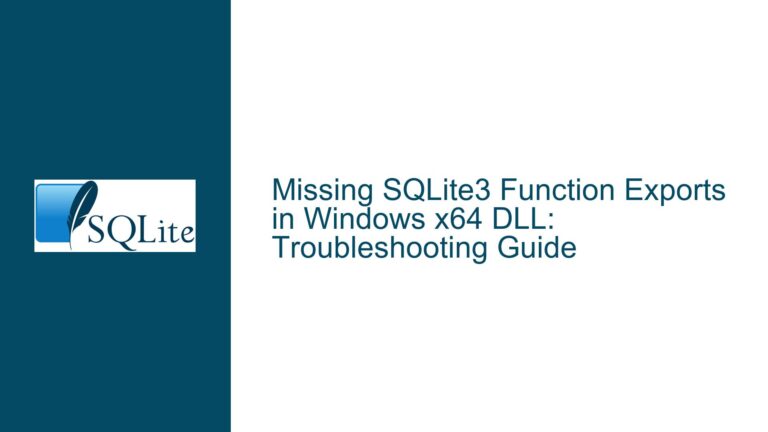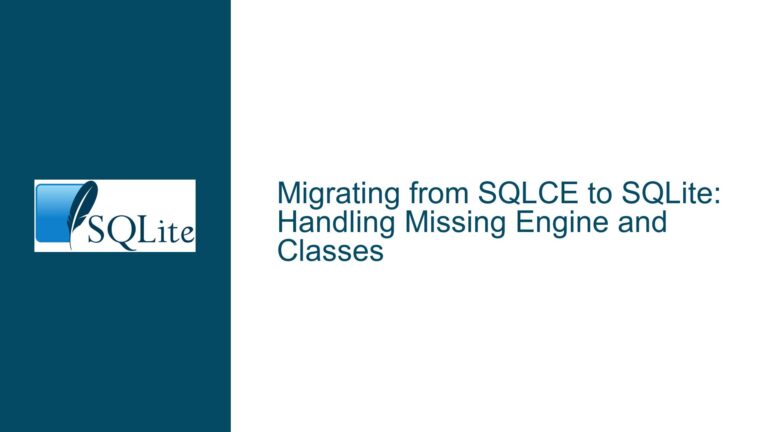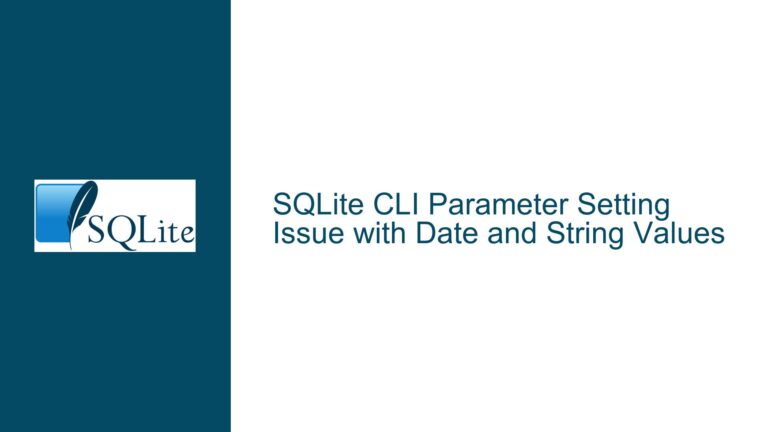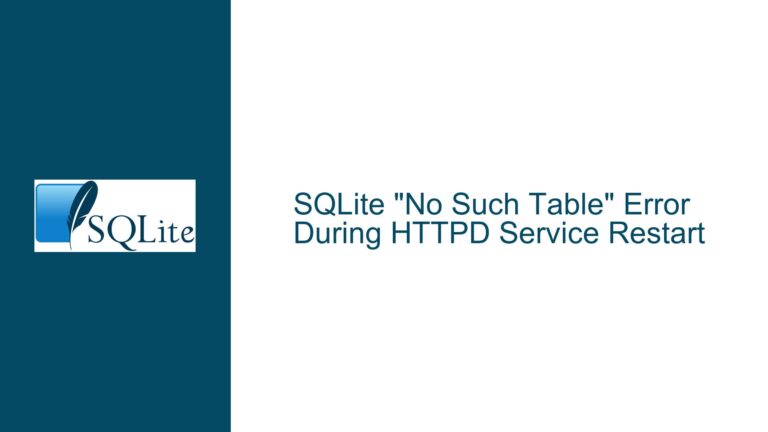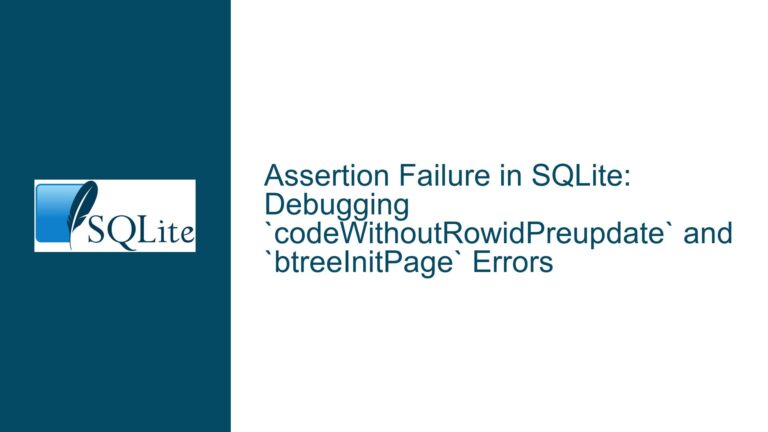SQLite Keywords: Usage, Nuances, and Troubleshooting
The Role and Usage of SQLite Keywords in SQL Statements
SQLite keywords are fundamental to constructing SQL statements, as they define the structure, behavior, and constraints of database operations. Keywords such as ABORT, CASCADE, DEFERRABLE, and DEFERRED are not just syntactic elements; they carry specific meanings and implications depending on their context within an SQL statement. For instance, ABORT is used in conflict resolution strategies, while CASCADE is often associated with foreign key constraints to propagate changes. Understanding these keywords is essential for writing efficient and correct SQL queries.
However, the challenge lies in the fact that SQLite keywords are not standalone entities with fixed definitions. Their meanings and usage are context-dependent. For example, DEFERRABLE and DEFERRED are closely related but serve different purposes. DEFERRABLE is a constraint attribute that determines whether a constraint check can be postponed until the end of a transaction, while DEFERRED specifies that the constraint check should indeed be postponed. This subtle distinction can significantly impact transaction behavior and performance.
The lack of a centralized, keyword-specific documentation in SQLite adds to the complexity. While the official SQLite documentation provides detailed explanations of SQL constructs (e.g., transactions, table creation), it does not explicitly break down the meaning and usage of individual keywords. This forces developers to infer keyword behavior from examples or scattered references across the documentation. For instance, the keyword STRICT is used in table creation to enforce strict typing, but its documentation is embedded within the broader context of the CREATE TABLE statement rather than being highlighted as a standalone keyword.
Ambiguities and Misconceptions Surrounding SQLite Keywords
One of the primary sources of confusion is the distinction between keywords and reserved words. In SQLite, not all keywords are reserved words. Reserved words are strictly prohibited from being used as identifiers (e.g., table or column names), while keywords can often be used as identifiers if properly quoted. For example, the keyword ABORT can be used as a table name if enclosed in double quotes: CREATE TABLE "ABORT"(id INTEGER);. This flexibility is intentional and allows SQLite to maintain backward compatibility while evolving its SQL dialect.
However, this flexibility can lead to ambiguities. Consider the keyword STRICT, which is not listed in the official SQLite keyword list but behaves like a keyword in certain contexts. When used in a CREATE TABLE statement, STRICT enforces strict typing, preventing implicit type conversions. Yet, it is not recognized by the sqlite3_keyword_name API, which enumerates SQLite keywords. This inconsistency can confuse developers who rely on the keyword list or API to validate their SQL statements.
Another point of confusion is the use of keywords in different SQL dialects. SQLite’s SQL dialect is not identical to other databases like PostgreSQL or MySQL. Keywords such as MATERIALIZED and RETURNING were introduced in SQLite version 3.34, and their usage may differ from other databases. Developers transitioning from other databases may assume that keywords behave the same across systems, leading to errors or suboptimal queries.
Resolving Keyword-Related Issues and Best Practices
To address keyword-related issues, developers should adopt a systematic approach to understanding and using SQLite keywords. Here are some practical steps:
Consult the Official Documentation: While SQLite does not provide a keyword-specific dictionary, its documentation is comprehensive and well-organized. Start with the SQL Language Reference and explore the sections relevant to your query. For example, the
DEFERRABLEandDEFERREDkeywords are explained in the Transaction Documentation.Use the Keyword Index: SQLite provides a Keyword Index that links keywords to their relevant documentation sections. This index is particularly useful for locating explanations of less common keywords.
Experiment with Keywords: SQLite’s interactive shell (
sqlite3) is an excellent tool for testing keyword behavior. For example, you can create a table with a keyword as an identifier to see how SQLite handles it:CREATE TABLE "FROM"(id INTEGER); INSERT INTO "FROM"(id) VALUES(1); SELECT * FROM "FROM";This experiment demonstrates that keywords can be used as identifiers when properly quoted.
Understand Contextual Usage: Keywords often have different meanings depending on their context. For example, the keyword
STRICTis only meaningful in the context of aCREATE TABLEstatement. Familiarize yourself with the specific contexts in which keywords are used to avoid misinterpretation.Leverage Community Resources: For nuanced or poorly documented keywords, community forums like StackOverflow can be invaluable. For example, the keyword
DEFERRABLEhas been extensively discussed in this StackOverflow thread, providing real-world examples and explanations.Avoid Using Keywords as Identifiers: While SQLite allows keywords to be used as identifiers, this practice can lead to confusion and errors. Instead, choose descriptive, non-keyword names for tables, columns, and other identifiers.
Stay Updated: SQLite is continuously evolving, with new keywords and features added in each release. Regularly review the SQLite Release Notes to stay informed about changes that may affect your queries.
By following these steps, developers can navigate the complexities of SQLite keywords and write more effective SQL queries. While the lack of a centralized keyword dictionary is a limitation, the combination of official documentation, community resources, and hands-on experimentation provides a robust framework for understanding and using SQLite keywords effectively.

